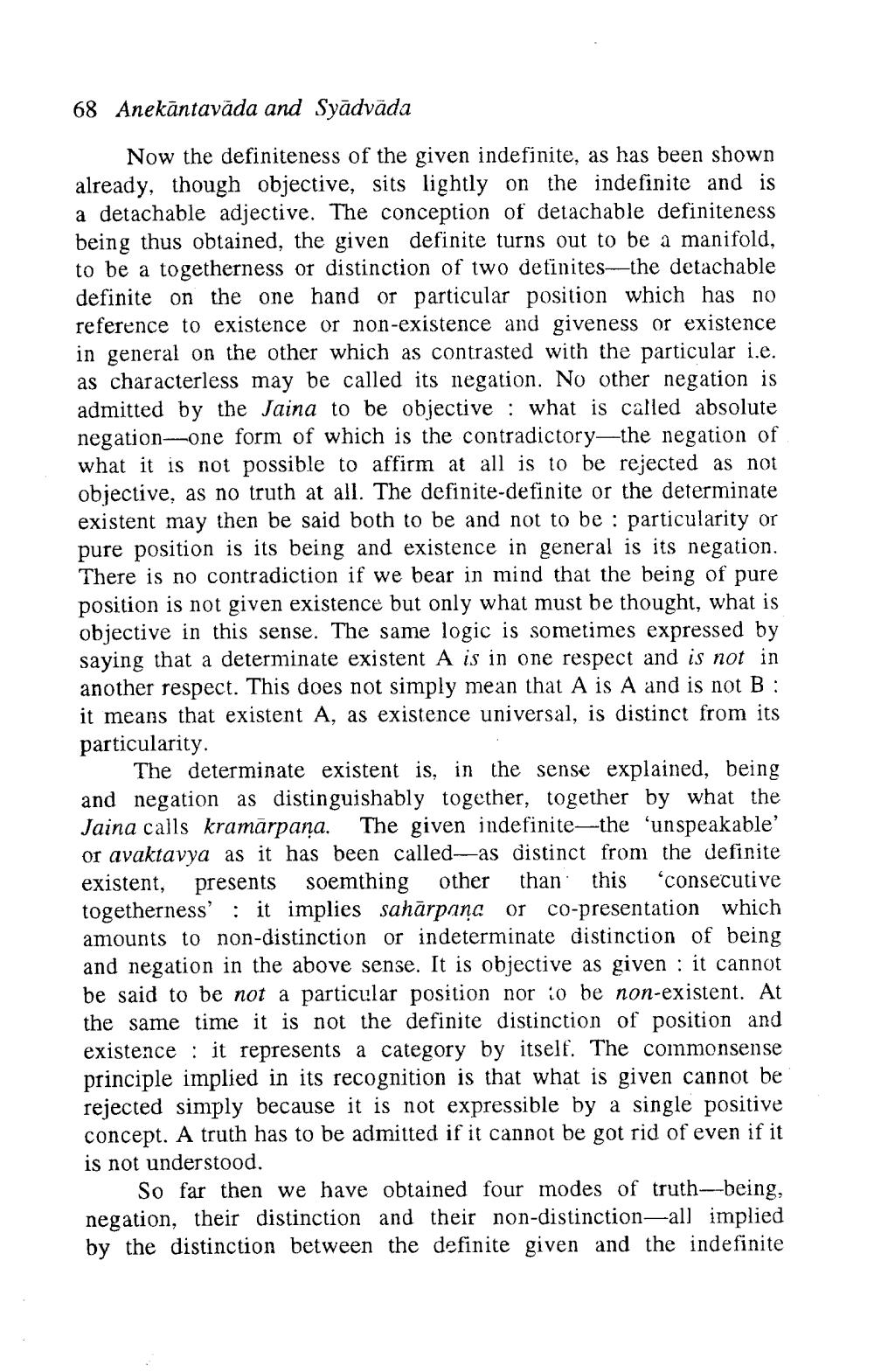________________
68 Anekāntavāda and Syādväda
Now the definiteness of the given indefinite, as has been shown already, though objective, sits lightly on the indefinite and is a detachable adjective. The conception of detachable definiteness being thus obtained, the given definite turns out to be a manifold, to be a togetherness or distinction of two definites--the detachable definite on the one hand or particular position which has no reference to existence or non-existence and giveness or existence in general on the other which as contrasted with the particular i.e. as characterless may be called its negation. No other negation is admitted by the Jaina to be objective : what is called absolute negation-one form of which is the contradictory—the negation of what it is not possible to affirm at all is to be rejected as not objective, as no truth at all. The definite-definite or the determinate existent may then be said both to be and not to be : particularity or pure position is its being and existence in general is its negation. There is no contradiction if we bear in mind that the being of pure position is not given existence but only what must be thought, what is objective in this sense. The same logic is sometimes expressed by saying that a determinate existent A is in one respect and is not in another respect. This does not simply mean that A is A and is not B: it means that existent A, as existence universal, is distinct from its particularity
The determinate existent is, in the sense explained, being and negation as distinguishably together, together by what the Jaina calls kramārpana. The given indefinite--the 'unspeakable' or avaktavya as it has been called—as distinct from the definite existent, presents soemthing other than this consecutive togetherness': it implies sahārpanc or co-presentation which amounts to non-distinction or indeterminate distinction of being and negation in the above sense. It is objective as given : it cannot be said to be not a particular position nor io be non-existent. At the same time it is not the definite distinction of position and existence : it represents a category by itself. The commonsense principle implied in its recognition is that what is given cannot be rejected simply because it is not expressible by a single positive concept. A truth has to be admitted if it cannot be got rid of even if it is not understood.
So far then we have obtained four modes of truth--being, negation, their distinction and their non-distinction—all implied by the distinction between the definite given and the indefinite




